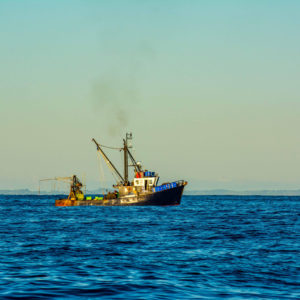Despite overwhelming evidence that the CRA2 fishery off Auckland’s east coast and Bay of Plenty is in critical condition the Minister for Primary Industries Nathan Guy says there’s no problem, and he has no intention of doing anything about the declining number of crayfish until at least April 2018.
Recreational fishers wrote to the Minister in June highlighting the ongoing decline in crayfish numbers, the need for urgent action, and the widespread support for a moratorium on the taking of crayfish along the north eastern coast between Waipu and East Cape (the region known as CRA2).

LegaSea spokesman Scott Macindoe says Guy’s response is unacceptable.
“The Minister says he has reduced the number of crayfish being taken by commercial operators by 15% but that’s crayfish they couldn’t catch. Now he tells us he’s brought forward a “full scientific review” of the fishery to later this year. Minister, by the time we’ve finished measuring the fishery we don’t believe there will be any legal crayfish left to count.”
Even the industry is feeling the pinch, with commercial fishers more than doubling their effort since 1997 and still not catching their full entitlement despite technology advances.
LegaSea has produced a video outlining the current state of the CRA2 fishery to help explain the situation to the public.
“We believe if New Zealanders knew the true extent of the mismanagement of the fisheries they would be appalled and ashamed of our so-called “world class” management approach. CRA2 has collapsed. It cannot regenerate itself. And it’s not alone in the depletion stakes.”
A survey of recreational fishers and divers who traditionally harvested crayfish in the CRA2 area found that three-quarters of those surveyed scored the size and availability of crayfish in this popular fishery as 1 or 2 out of 7. Six percent rated it as average, and only 2.2% described the fishery as above average.
Of those who took part, 83% supported or strongly supported a seasonal closure to all harvest to help the crayfish recover. Only 7% opposed or strongly opposed the move.
Most were willing to go even further, with 62% supporting or strongly supporting a total closure of the fishery for a fixed time, with a managed reintroduction of fishing once the fishery reopens. LegaSea is concerned that statutory obligations to maintain the fishery at healthy levels are being ignored in favour of commercial interests whose ridiculously low catch rates are only economically viable due to the premium prices available from live fish exports to China.
The Fisheries Act says the purpose of the Act is ‘to maintain the potential of fisheries resources to meet the reasonably foreseeable needs of future generations’, yet the lack of crayfish in this once-abundant fishery is not being addressed by the Ministry or its Minister.
“The Minister is failing in his duty to the people of New Zealand and to the fisheries he is supposed to oversee. We want to ensure there are fish left in the sea for future generations but at this rate our grandchildren will miss out. We urge all New Zealanders to write to their MPs and demand to know what they will do about this absolute travesty. We’re calling for a Royal Commission of Inquiry into the mismanagement of New Zealand’s fisheries,” says Macindoe.
LegaSea calls on the people of New Zealand to demand answers from their MPs and to join in the call for a Royal Commission of Inquiry.
The LegaSea video can be found at: www.legasea.co.nz/our-cra2-fishery
ENDS
For more information please contact:
Paul Brislen
[email protected]
021988896





